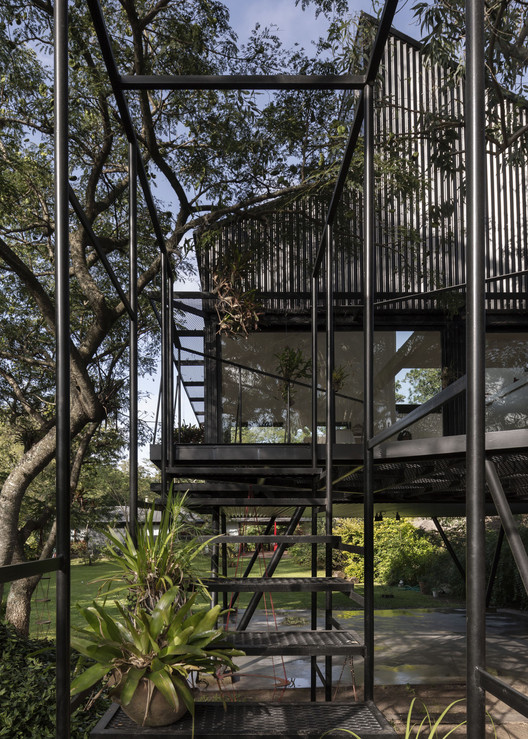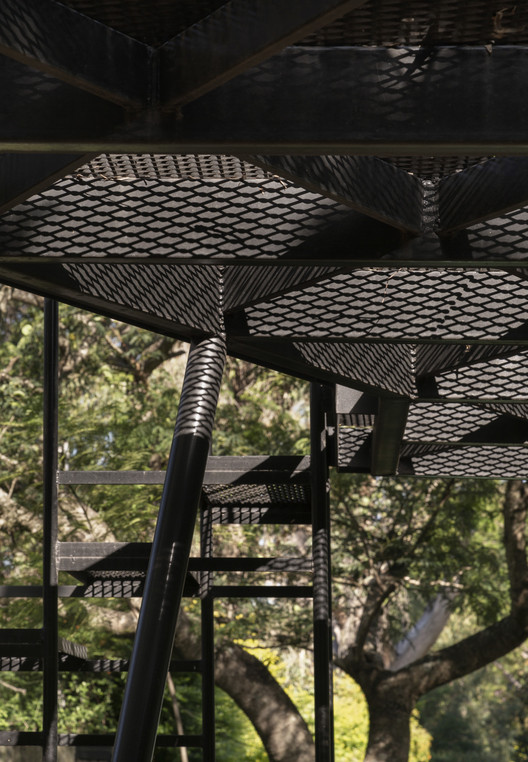
-
Architects: Paschetta Cavallero Arquitectos
- Area: 656 ft²
- Year: 2018
-
Photographs:Federico Cairoli
-
Manufacturers: Masisa, Aluar, Gerdau Corsa, Ikea, Isover, Knauf
-
Lead Architects: Leticia Paschetta, José Marcos Cavallero

Text description provided by the architects. Tree House (Casita del árbol) is a Multiple Use space located in an area of high environmental value on the outskirts of the city of Santa Fe, in the middle of the landscape of the Paraná River.


























